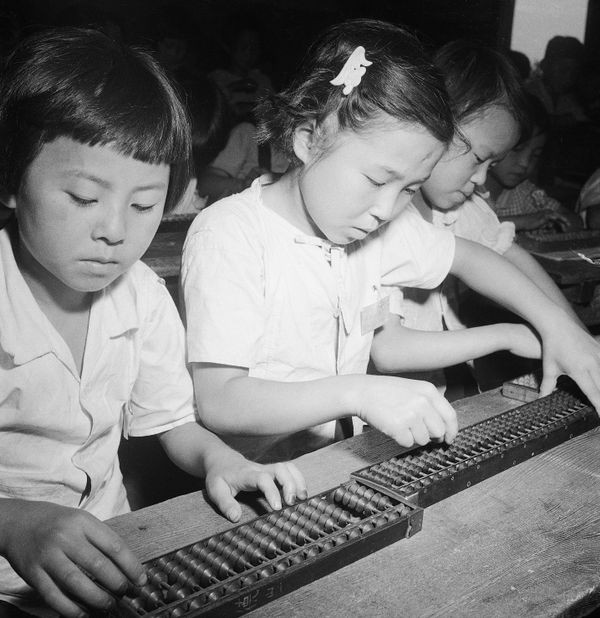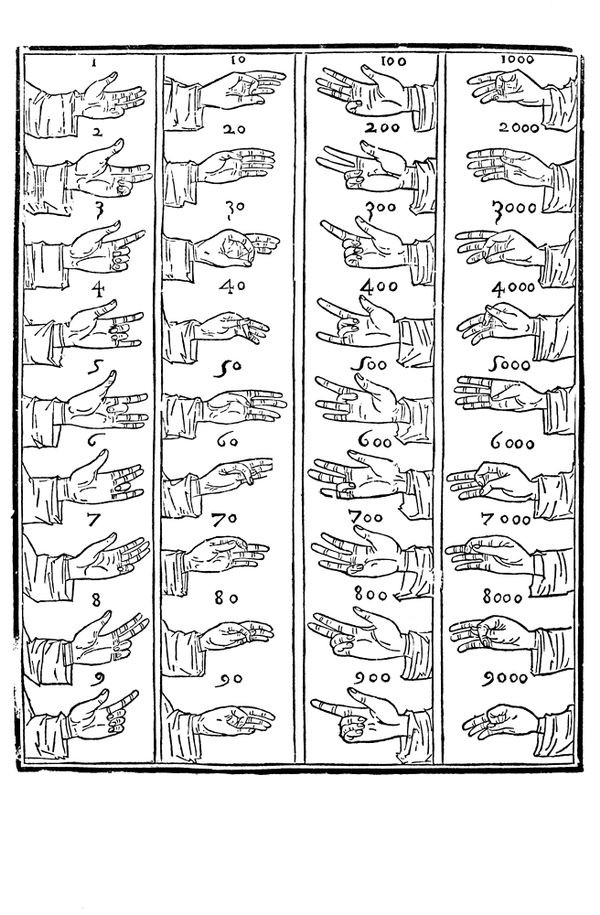Mathematical Tools
Children compute with an abacus
Korean children use an abacus to learn arithmetic at their school.
Mathematical Tools
Throughout the history of calculating we’ve devised ways to add speed and accuracy while subtracting the drudgery.
Many solutions used body parts, notably fingers. A 19th century Chinese technique can count to 10 billion using just two hands! Other solutions were mechanical — both general-purpose tools for everyday calculations and specialized instruments for engineering, navigational, or other scientific and technical problems.
A page from Summa de arithmetica, geometrica, proportioni et proportionalita
Renaissance Italian merchants used Pacioli’s finger-counting system to barter. His Summa also included the first published description of double-entry bookkeeping.
View Artifact DetailA Living Abacus
In the 1940s, Korean mathematician Sung Jin Pai applied the abacus principle to human hands. His chisanbop method replaced the abacus’s moveable beads with moving fingers.
Kids and grownups learned to raise and lower their fingers and thumbs off a tabletop, in various combinations, to represent any number from one to 99.

